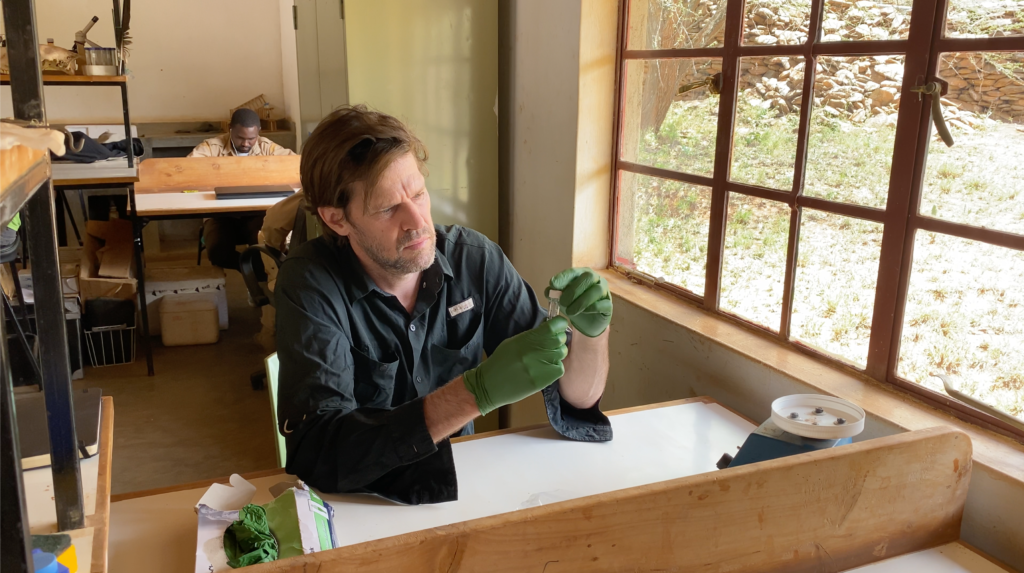Rob Pringle is learning how to rebuild broken ecosystems
Pringle inspects an homogenized elephant fecal sample in the field laboratory at Mpala Research Centre. Photo Credit: High Meadows Environmental Institute
Pringle set out to determine animal diets down to a granular level using a revolutionary technique called DNA metabarcoding, which identifies the DNA of a mix of grass and plants in 250 million lines of genetic code.
“It’s not just sequencing a string of DNA, because we’re taking a soup of DNA and sequencing all of it at once,” Pringle said.
Pringle and his team collected fecal samples from animals at Gorongosa and Mpala, preserved them, and brought them back to the lab for analysis. Building online databases of plant and animal DNA, they were able to map out the ecosystem’s food webs. Improved technology and methods have led Pringle’s lab to even more precise and revealing molecular measurements of environmental DNA (eDNA), which includes cellular material shed by animals.
“Nature is one giant crime scene, the DNA is everywhere, and we are the forensic investigators”

